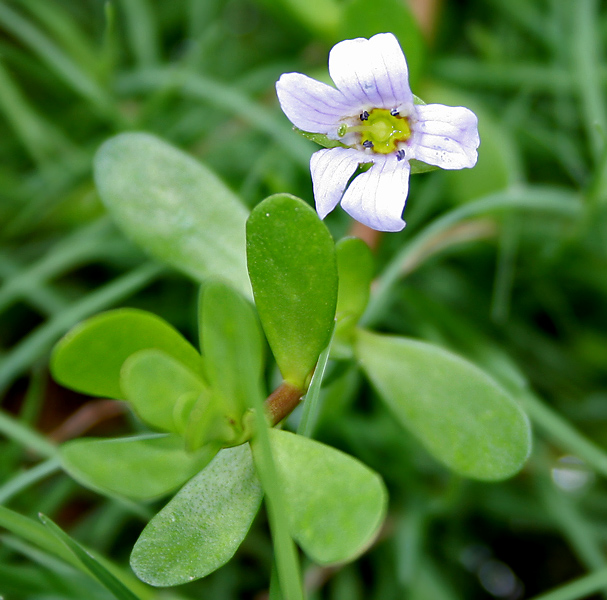|
Julio Augusto Henriques
Júlio Augusto Henriques (15 January 1838 - 15 January 1928) was a Portuguese botanist and professor at the University of Coimbra. He developed the Herbarium of the University and Coimbra Botanical Garden. He also founded the Broterian Society, which brought together various scientists botanists, geologists and naturalists. He was a large admirer of the work of Charles Darwin.Thomas F. Glick and Elinor Shaffer . p. 580 He also wrote many articles about the flora of Portugal. Biography Henriques was born on 15 January 1838, in the parish of Arco de Baúlhe e Vila Nune, Arco de Baúlhe. In 1853, he married Zulmira Angelina de Magalhães Lima. He went to school in the city of Braga. In 1854, he trained to become a lawyer at College of São Bento in Coimbra, (following his fathers wishes). He completed his law course in 1859, but then enrolled on a second college course in Philosophy at the University of Coimbra. After gaining a bachelor's degree in Philosophy, he went on to obtain ... [...More Info...] [...Related Items...] OR: [Wikipedia] [Google] [Baidu] |
Arco De Baúlhe E Vila Nune
Arco de Baúlhe e Vila Nune is a Freguesia (Portugal), civil parish in the municipality of Cabeceiras de Basto Municipality, Cabeceiras de Basto, northern Portugal. It was formed in 2013 by the merger of the former parishes Arco de Baúlhe and Vila Nune. The population in 2011 was 2,048,Instituto Nacional de Estatística (INE) Census 2011 results according to the 2013 administrative division of Portugal in an area of 9.04 km². Arco de Baúlhe had a railway station between 1949 and 1990 - the northern terminus of the Tâmega line. References Freguesias of Cabeceiras de Basto {{Braga-geo-stub ...[...More Info...] [...Related Items...] OR: [Wikipedia] [Google] [Baidu] |
Sociedade Broteriana
The Broterian Society () is a botanical scientific society, the first of its kind in Portugal, established in 1880 by Júlio Henriques, professor of Botany and Agriculture at the University of Coimbra, to promote the development of botanical studies, particularly that of floristics, in Portugal. It is thus named after eminent naturalist Félix de Avelar Brotero Felix may refer to: * Felix (name), people and fictional characters with the name Places * Arabia Felix is the ancient Latin name of Yemen * Felix, Spain, a municipality of the province Almería, in the autonomous community of Andalusia, ..., author of the first lengthy description of native Portuguese plants, ''Flora Lusitanica'', in 1804. Between 1881 and 1901 the society published and distributed annual series of specimens which superficially resemble exsiccatae by printed labels with title and numbered species name, starting with ''Flora Lusitanica (Soc. Brot. 1. anno)'' and ending with ''Flora Lusitanica ( ... [...More Info...] [...Related Items...] OR: [Wikipedia] [Google] [Baidu] |
Lecanora Newtoniana
''Lecanora'' is a genus of lichen commonly called rim lichens.Field Guide to California Lichens, Stephen Sharnoff, Yale University Press, 2014, Lichens in the genus '' Squamarina'' are also called rim lichens. Members of the genus have roughly circular fruiting discs (apothecia) with rims that have photosynthetic tissue similar to that of the nonfruiting part of the lichen body (thallus). Other lichens with apothecia having margins made of thallus-like tissue are called lecanorine. It is in the family Lecanoraceae in the suborder Lecanorineae. Description ''Lecanora'' has a crustose thallus, photobiont, colourless ascospores and crystals in the amphothecium. Swiss lichenologist Rosmarie Honegger used electron microscopy in the late 1970s to investigate ascus structure in several major groups of lichen-forming fungi. She defined the ''Lecanora''-type ascus as one characterized by several distinctive features: (1) a non-amyloid, clear ascus wall that is encased in an amylo ... [...More Info...] [...Related Items...] OR: [Wikipedia] [Google] [Baidu] |
Malaria
Malaria is a Mosquito-borne disease, mosquito-borne infectious disease that affects vertebrates and ''Anopheles'' mosquitoes. Human malaria causes Signs and symptoms, symptoms that typically include fever, Fatigue (medical), fatigue, vomiting, and headaches. In severe cases, it can cause jaundice, Epileptic seizure, seizures, coma, or death. Symptoms usually begin 10 to 15 days after being bitten by an infected ''Anopheles'' mosquito. If not properly treated, people may have recurrences of the disease months later. In those who have recently survived an infection, reinfection usually causes milder symptoms. This partial Immunity (medical), resistance disappears over months to years if the person has no continuing exposure to malaria. The mosquitoes themselves are harmed by malaria, causing reduced lifespans in those infected by it. Malaria is caused by protozoa, single-celled microorganisms of the genus ''Plasmodium''. It is spread exclusively through bites of infected female ... [...More Info...] [...Related Items...] OR: [Wikipedia] [Google] [Baidu] |
Quinine
Quinine is a medication used to treat malaria and babesiosis. This includes the treatment of malaria due to ''Plasmodium falciparum'' that is resistant to chloroquine when artesunate is not available. While sometimes used for nocturnal leg cramps, quinine is not recommended for this purpose due to the risk of serious side effects. It can be taken by mouth or intravenously. Malaria resistance to quinine occurs in certain areas of the world. Quinine is also used as an ingredient in tonic water and other beverages to impart a bitter taste. Common side effects include headache, tinnitus, ringing in the ears, vision issues, and sweating. More severe side effects include deafness, thrombocytopenia, low blood platelets, and an irregular heartbeat. Use can make one more prone to sunburn. While it is unclear if use during pregnancy carries potential for fetal harm, treating malaria during pregnancy with quinine when appropriate is still recommended. Quinine is an alkaloid, a natural ... [...More Info...] [...Related Items...] OR: [Wikipedia] [Google] [Baidu] |
Angola
Angola, officially the Republic of Angola, is a country on the west-Central Africa, central coast of Southern Africa. It is the second-largest Portuguese-speaking world, Portuguese-speaking (Lusophone) country in both total area and List of countries and dependencies by population, population and is the List of African countries by area, seventh-largest country in Africa. It is bordered by Namibia to the south, the Democratic Republic of the Congo to the north, Zambia to the east, and the Atlantic Ocean to the west. Angola has an Enclave and exclave, exclave province, the province of Cabinda Province, Cabinda, that borders the Republic of the Congo and the Democratic Republic of the Congo. The capital and most populous city is Luanda. Angola has been inhabited since the Paleolithic, Paleolithic Age. After the Bantu expansion reached the region, states were formed by the 13th century and organised into confederations. The Kingdom of Kongo ascended to achieve hegemony among the ... [...More Info...] [...Related Items...] OR: [Wikipedia] [Google] [Baidu] |
Príncipe
Príncipe (; ) is the smaller, northern major island of the country of São Tomé and Príncipe lying off the west coast of Africa in the Gulf of Guinea. It has an area of (including offshore islets) and a population of 7,324 at the 2012 Census;Projecção a nível distrital 2012 – 2020 Instituto Nacional de Estatística (São Tomé and Príncipe), Instituto Nacional de Estatística the latest official estimate (at May 2018) was 8,420.Instituto Nacional de Estatística. The island is a heavily eroded volcano speculated to be over three million years old, surrounded by smaller islands including Ilheu Bom Bom, Ilhéu Caroço, Tinhosa Grande and Tin ... [...More Info...] [...Related Items...] OR: [Wikipedia] [Google] [Baidu] |
São Tomé
São Tomé is the capital and largest city of the Central African island country of São Tomé and Príncipe. Its name is Portuguese for " Saint Thomas". Founded in the 15th century, it is one of Africa's oldest colonial cities. History Álvaro Caminha founded the colony of São Tomé in 1493. The Portuguese came to São Tomé in search of land to grow sugarcane. The island was uninhabited before the arrival of the Portuguese sometime around 1470. São Tomé, situated about north of the equator, had a climate wet enough to grow sugarcane in wild abundance. In 1497, 2,000 Jewish children, eight years old and under, were kidnapped from the Iberian peninsula, and forcefully converted to receive catholic education, following the national policy of conversion to Catholicism. The nearby African Kingdom of Kongo eventually became a source of slave labor as well. The island of São Tomé was the main center of sugar production in the sixteenth century; it was overtaken by Brazil b ... [...More Info...] [...Related Items...] OR: [Wikipedia] [Google] [Baidu] |
Serra Da Estrela
Serra da Estrela (, ) is the highest mountain range in Continental Portugal. Together with the Serra da Lousã it is the westernmost constituent range of the Sistema Central and also one of the highest in the system. It includes mainland Portugal's highest point at above mean sea level (although the summit of Mount Pico in the Portuguese Azores islands is higher). This point is not a distinctive mountain summit, but rather the highest point in a plateau, being known as Torre ("Tower" in English). Torre is an unusual summit in that it is accessible by a paved road. The peak has a topographic prominence of and its parent peak is Pico Almanzor, in Spain. The mountain range, situated between the municipalities of Seia, Manteigas, Gouveia, Guarda and Covilhã, is about long and is across at its widest point. It is formed from a huge granite ridge that once formed the southern frontier of the country. Rivers There are three rivers that have their headwaters in the Serra d ... [...More Info...] [...Related Items...] OR: [Wikipedia] [Google] [Baidu] |
Baixo Mondego
Baixo Mondego (; ''Lower Mondego'' in English) is a former Portuguese NUTS3 subregion that comprised the lower part of the Mondego River. It was abolished at the January 2015 NUTS 3 revision. Instituto Nacional de Estatística, 18 March 2015 It was a subregion of the , centered on the historical city of |
Plantaginaceae
Plantaginaceae, the plantain family or veronica family, is a large, diverse family (biology), family of flowering plants in the order Lamiales that includes common flowers such as Antirrhinum, snapdragon and Digitalis, foxglove. It is unrelated to the true plantains, banana-like fruit also called "plantain". In older classifications, Plantaginaceae was the only family of the order Plantaginales, but numerous phylogenetic studies, summarized by the Angiosperm Phylogeny Group, have demonstrated that this taxon should be included within Lamiales. Overview The plantain family as traditionally circumscribed consisted of only three genera: ''Bougueria'', ''Littorella'', and ''Plantago''. However phylogenetic research has indicated that Plantaginaceae ''sensu stricto'' (in the strict sense) were nested within Scrophulariaceae (but forming a group that did not include the type genus of that family, ''Scrophularia''). Although Veronicaceae (1782) is the oldest family name for this group, ... [...More Info...] [...Related Items...] OR: [Wikipedia] [Google] [Baidu] |
Poaceae
Poaceae ( ), also called Gramineae ( ), is a large and nearly ubiquitous family of monocotyledonous flowering plants commonly known as grasses. It includes the cereal grasses, bamboos, the grasses of natural grassland and species cultivated in lawns and pasture. The latter are commonly referred to collectively as grass. With around 780 genera and around 12,000 species, the Poaceae is the fifth-largest plant family, following the Asteraceae, Orchidaceae, Fabaceae and Rubiaceae. The Poaceae are the most economically important plant family, including staple foods from domesticated cereal crops such as maize, wheat, rice, oats, barley, and millet for people and as feed for meat-producing animals. They provide, through direct human consumption, just over one-half (51%) of all dietary energy; rice provides 20%, wheat supplies 20%, maize (corn) 5.5%, and other grains 6%. Some members of the Poaceae are used as building materials ( bamboo, thatch, and straw); oth ... [...More Info...] [...Related Items...] OR: [Wikipedia] [Google] [Baidu] |



